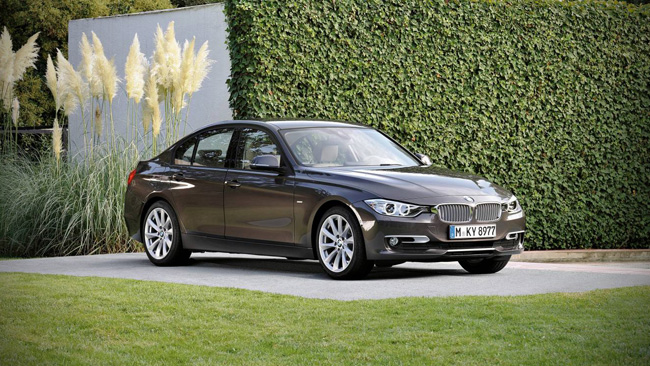BMW is championing its sixth-generation 3 Series as a bigger yet lighter, and faster yet more frugal compact rear-drive sedan. We won’t know how the car drives until its international launch in November, when we find out if the F30 is more dynamic yet smoother-riding, but it’s difficult to argue with the on-paper improvements.
From the rear, the new 3 looks more like a 5 Series, while a more unique front-end design runs the traditional double-kidney grille deep into the headlight recess. While the general shape remains similar to the outgoing generation, a deeper side character crease and a longer, almost Z4-like bonnet defines the difference. Despite being 97mm longer overall, and with an extended wheelbase (+50mm) and front/rear tracks (+37/+47mm), the new F30 sheds on average 40kg over the E90.
For the first time since 1977, a naturally-aspirated six-cylinder engine will not be part of the 3 Series range. The sixth-gen will open with the 328i, utilising a 180kW/350Nm 2.0-litre twin-scroll turbo-petrol four-cylinder engine. More efficient (6.4L/100km claimed combined) and faster (0-100km/h in 5.9sec) than the outgoing 325i six, the 328i will be soon followed by a detuned 135kW/270Nm version of the same turbo-four in the 320i. Thankfully for in-line six fans, the 225kW/400Nm 3.0-litre twin-scroll turbo six is retained for the range topping 335i.
All models score a six-speed manual or eight-speed auto, stop-start and brake energy regeneration tech, to assist with reducing consumption. The 2.0-litre turbo-diesel 320d is rated at 4.1L/100km and 109g/km of Co2.
When the new 3 Series arrives here next year, it will be available in three trim levels for each variant – Sport, Modern and Luxury. Similar to Mercedes’ Classic, Elegance and Avantgarde lines, each will offer buyers subtle styling and trim variations.
Despite the axing of the lovely atmo six-cylinder, we’re eagerly awaiting a first drive of this bigger, lighter, faster, greener, and hopefully smoother-riding new 3 Series. Stay tuned.





